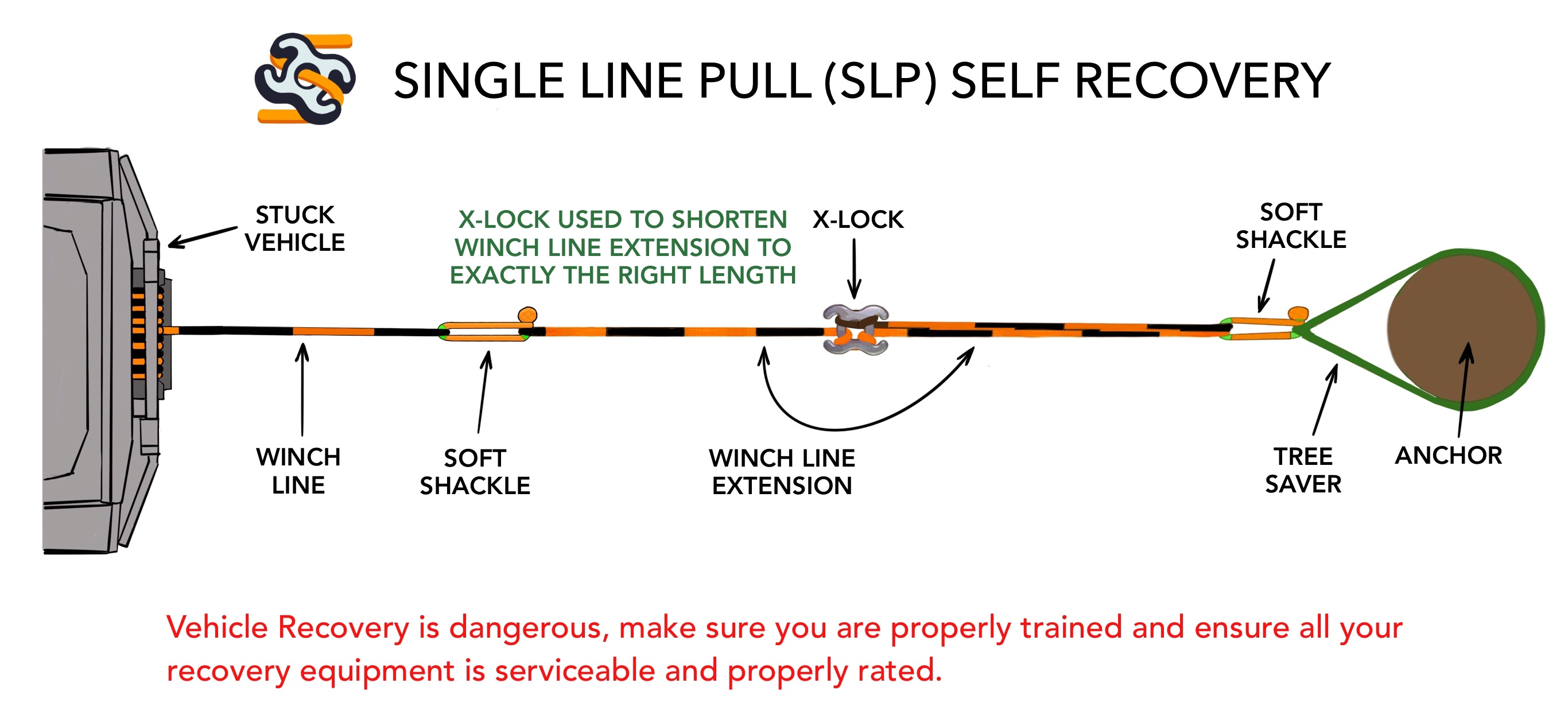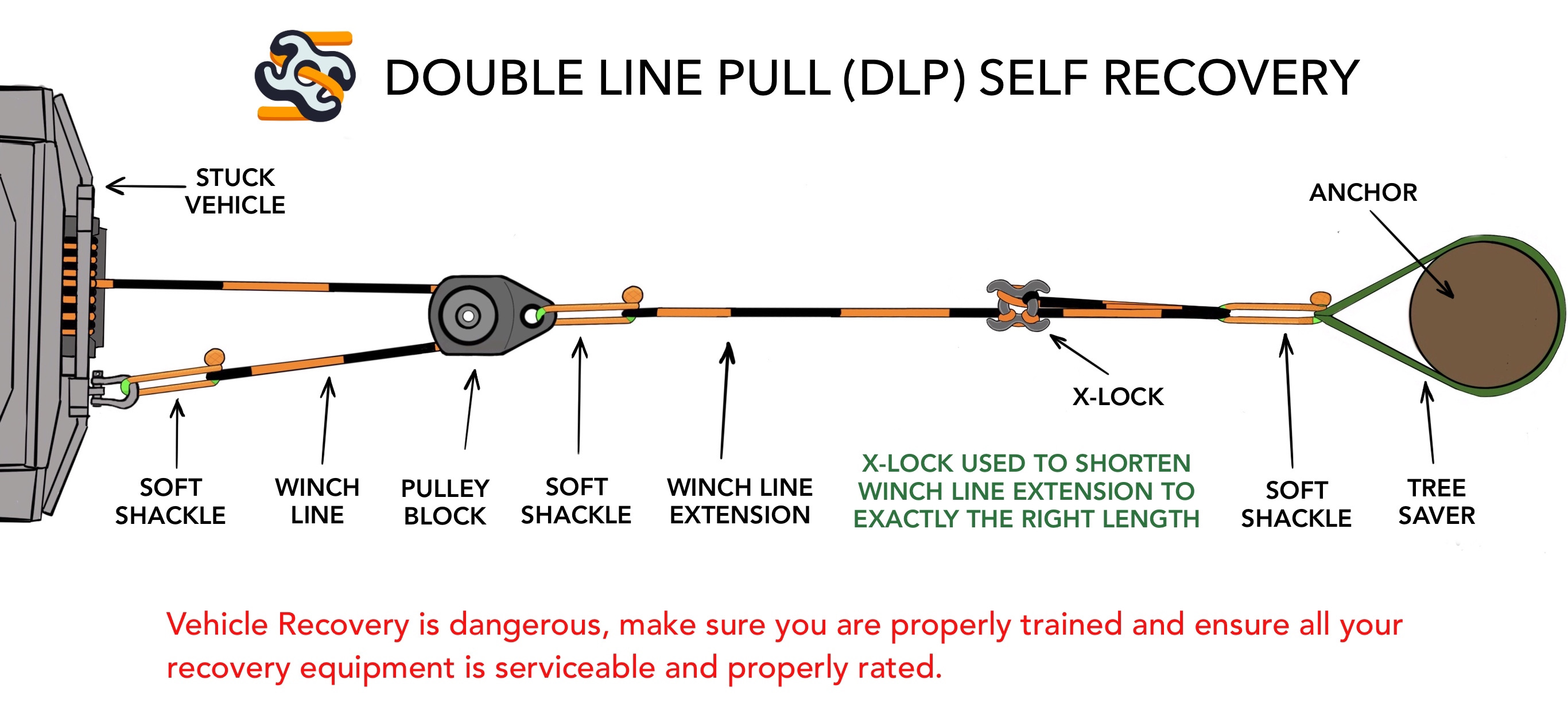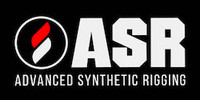Safe-Xtract Standard Vehicle Recovery Configurations
When it comes to Vehicle Recovery, there are a few basic rigging configurations on which all other configurations are built. Some require a winch, others do not. These basic configurations are as follows:

No winch required, the TX configuration simply involves an assisting vehicle using it’s traction to pull on a stuck vehicle. When performing a TX, it is important to use a line/strap that does not stretch, such as a Tree Saver strap. Using Tree Saver straps in an X-configuration more evenly distributes pulling power while providing superior control. Safe-Xtract Tree Saver straps have Cordura guards down one side of their body – in the X-configuration these Cordura guards can be oriented against one another to mitigate any chafing between straps.
-------------------------------------------------------------

No winch required, the MX configuration incorporates the momentum-transferring Kinetic Energy Rope, using it as a medium through which energy is transferred from an assisting vehicle to a stuck vehicle. When the Kinetic Energy Rope is attached to the stuck vehicle in a V configuration, it further enhances safety and load distribution.
-------------------------------------------------------------
The SLP configuration is the simplest and most common winching configuration - the vast majority of vehicle recoveries involve SLP. SLP can be done either for self-recovery (as per the above diagram) or when someone is recovering someone else. SLP is simple to execute and requires very little equipment – usually just a Winch Line and a Soft Shackle to connect the Winch Line to an anchor of some sort (assist vehicle, tree via Tree Saver strap, etc.). Assuming no shock load or significant side loading, every component in the SLP chain experiences the load that is being applied by the winch. Always remember to remove as many line layers off the winch drum as possible in order to maximize winch pulling power, and when using the winch on an assisting vehicle, be sure to set that vehicle’s brake and chock the wheels with rocks if necessary. Also make sure you shift the automatic transmission into neutral to avoid damaging the parking pawl.
-------------------------------------------------------------

DLP can be done either for self-recovery (as per the above diagram) or when someone is recovering someone else. From a practical standpoint, the DLP configuration is a way to halve the load on your winch when you are operating at or near winch capacity. When this is done, some components will undergo loading as high as double winch capacity and so components should be sized accordingly. Always remember to remove as many line layers off the winch drum as possible in order to maximize winch pulling power, and when using the winch on an assisting vehicle, be sure to set that vehicle’s brake and chock the wheels with rocks if necessary. Also make sure you shift the automatic transmission into neutral to avoid damaging the parking pawl.
-------------------------------------------------------------

The RD configuration is used when no in-line anchor is available. It can be done either for self-recovery (as per the above diagram) or when someone is recovering someone else. RD is traditionally done with a Pulley Block, which can travel as the Winch Line is winched in. RD can also be done with a Safe-Xtract X-Lock - this method provides superior directional control because the X-Lock does not travel as the Winch Line is winched in. Always remember to remove as many line layers off the winch drum as possible in order to maximize winch pulling power, and when using the winch on an assisting vehicle, be sure to set that vehicle’s brake and chock the wheels with rocks if necessary. Also make sure you shift the automatic transmission into neutral to avoid damaging the parking pawl.
-------------------------------------------------------------

The SB configuration uses two Pulley Blocks to leveraging mechanical advantages that enable a winch to pull at 4X rated capacity. In doing this, the pull point opposite the winch (to include the Pulley Block and connector such as a Soft Shackle) may experience approximately 4X greater loading than the winch capacity, making it important to ensure that all components have the appropriate strength ratings. This is why the SB configuration requires some components that are oversized in comparison to those components required for SLP, DLP and RD. As with the other winching configurations, SB can be done either for self-recovery (as per the above diagram) or when someone is recovering someone else. Always remember to remove as many line layers off the winch drum as possible in order to maximize winch pulling power, and when using the winch on an assisting vehicle, be sure to set that vehicle’s brake and chock the wheels with rocks if necessary. Also make sure you shift the automatic transmission into neutral to avoid damaging the parking pawl.
